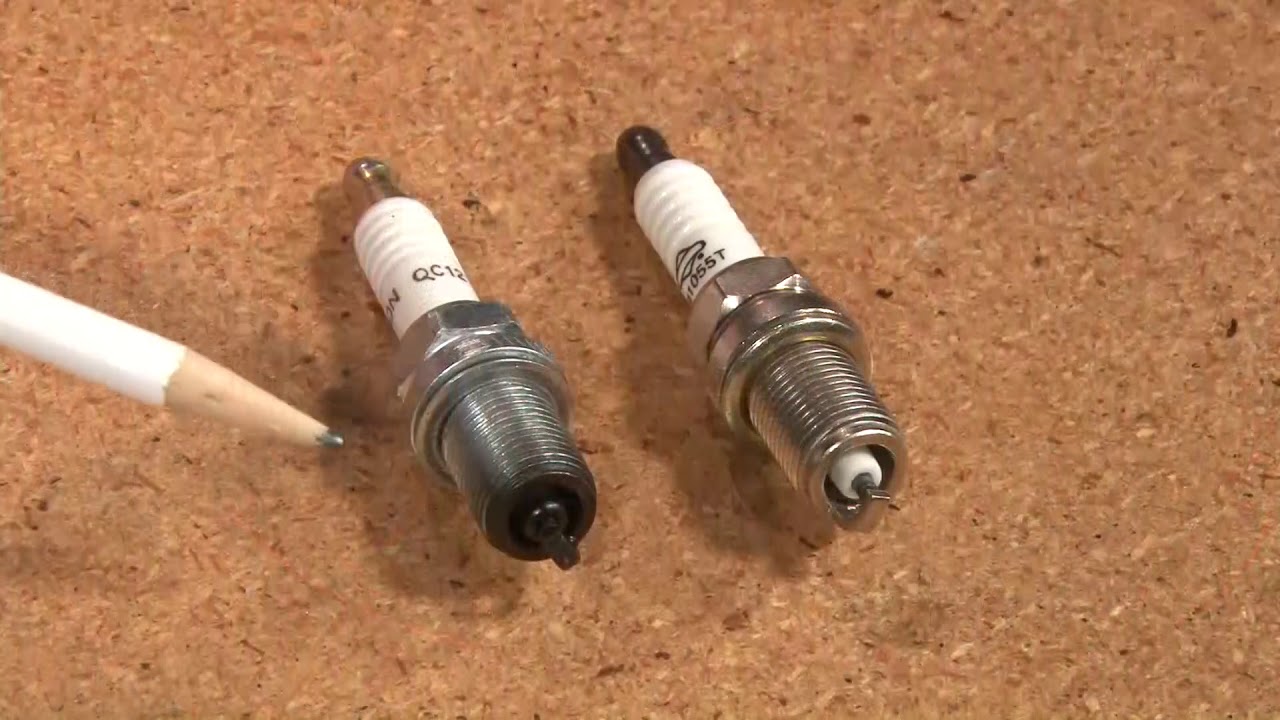To remove a lawn mower spark plug, locate and remove the spark plug wire, then use a spark plug socket and wrench to unscrew the spark plug from the engine. After that, you can pull the spark plug out of the engine.
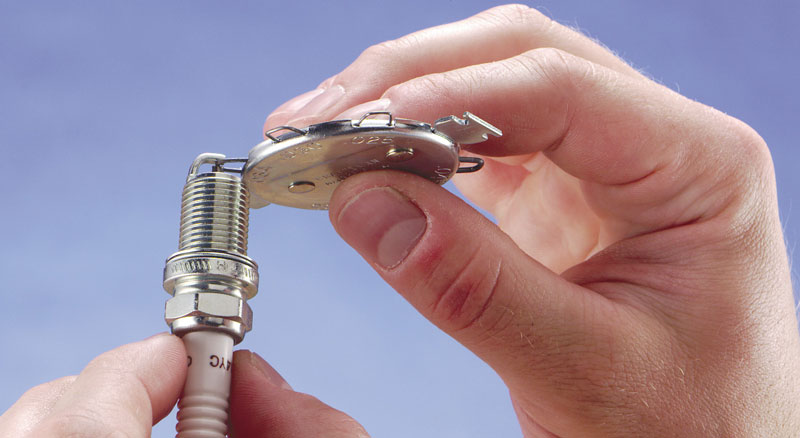
Credit: www.briggsandstratton.com
Understanding The Importance Of Removing The Spark Plug
Maintaining your lawn mower is essential to ensure it runs smoothly and efficiently. One important aspect of lawn mower maintenance is removing the spark plug. So, why is it so crucial? Let’s delve into the significance of this simple task.
Why Removing The Spark Plug Is Essential For Lawn Mower Maintenance
- Prevents Accidental Starting: Removing the spark plug eliminates the risk of the engine accidentally starting while you’re working on the mower, ensuring your safety.
- Facilitates Thorough Cleaning: Taking out the spark plug gives you better access to the engine, making it easier to clean any debris, dirt, or grass clippings that might have accumulated. This helps maintain optimal performance.
- Allows for Inspection and Replacement: Removing the spark plug allows you to inspect it for any signs of damage, such as wear and tear or carbon build-up. By regularly checking and replacing the spark plug if necessary, you can optimize the combustion process.
- Facilitates Troubleshooting: If your lawn mower isn’t starting or running smoothly, the spark plug could be the culprit. By removing it, you can assess its condition and determine if it needs cleaning, adjustment, or replacement.
The Role Of The Spark Plug In The Combustion Process
- Ignition Source: The spark plug provides the electrical spark necessary to ignite the fuel-air mixture in the engine’s combustion chamber, kickstarting the whole combustion process.
- Heat Dissipation: The spark plug not only ignites the fuel but also plays a crucial role in dissipating the heat generated during combustion. This helps prevent overheating, which could lead to engine damage.
- Carbon Deposit Prevention: A properly functioning spark plug helps prevent excessive carbon deposits from forming on the electrode. Carbon deposits can impair the spark plug’s performance, leading to misfires and reduced engine efficiency.
Common Signs That Indicate It’S Time To Remove The Spark Plug
- Difficulty Starting: If your lawn mower is struggling to start, it could be a sign that the spark plug is dirty, worn out, or faulty. Removing and inspecting the spark plug can help diagnose the issue.
- Poor Engine Performance: If you notice a drop in power, rough idling, or frequent stalling, the spark plug may be to blame. Removing it can reveal signs of fouling, corrosion, or other problems.
- Increased Fuel Consumption: If your lawn mower is suddenly consuming more fuel than usual, it could be due to a faulty spark plug. Checking and cleaning (or replacing) the spark plug might improve fuel efficiency.
By understanding the importance of removing the spark plug and recognizing the signs of potential issues, you can keep your lawn mower running smoothly and maintain a well-groomed lawn. Regular maintenance and thorough inspections will help extend the life of your mower and ensure it operates at peak performance.
Tools And Materials Needed
Removing the spark plug from your lawn mower is an essential maintenance task that should be completed regularly to ensure optimal performance. Whether you’re experiencing ignition problems or simply need to replace a worn-out spark plug, knowing how to remove it correctly is crucial.
In this section, we’ll discuss the tools and materials you’ll need for the job, as well as important safety precautions to consider before starting the removal process.
Essential Tools For Removing The Spark Plug:
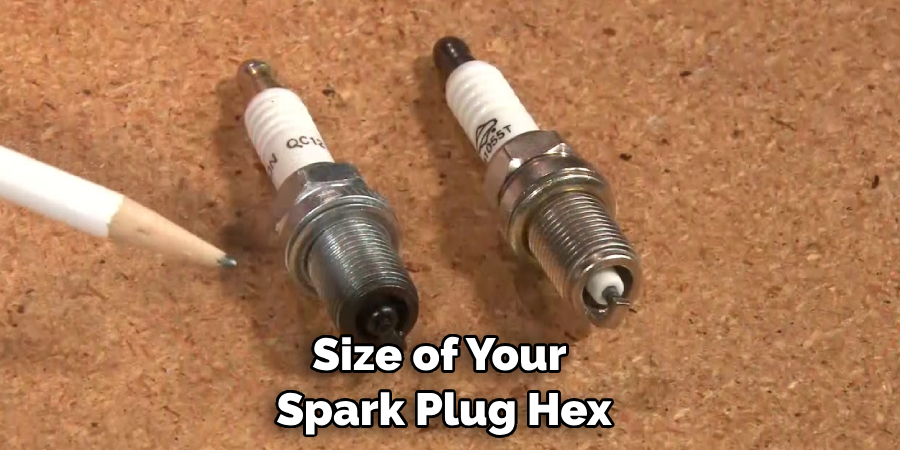
- Socket Wrench: This tool is essential for loosening and removing the spark plug. Make sure to choose one that fits the size of your spark plug hex.
- Spark Plug Socket: A specialized socket with a rubber insert that securely holds the spark plug, preventing any damage during removal.
- Ratchet Handle: Attach the spark plug socket to the ratchet handle for better control and leverage when turning.
- Extension Bar: If the spark plug is hard to reach, an extension bar can help you extend the reach of your socket wrench for easier access.
- Gap Gauge: Before installing a new spark plug, use a gap gauge to ensure the electrode gap is correctly set. This will optimize the ignition process.
Safety Precautions To Consider Before Starting The Removal Process:
- Disconnect the Spark Plug Wire: Before working on your lawn mower, make sure to disconnect the spark plug wire to prevent accidental starting. This will minimize the risk of injury.
- Allow the Engine to Cool: Working on a hot engine can be dangerous. Give your lawn mower enough time to cool down before attempting to remove the spark plug.
- Wear Protective Gloves: Protect your hands from potential burns or injuries by wearing thick, protective gloves. This will also provide better grip and control when handling the tools.
- Clean the Surrounding Area: Before removing the spark plug, clean the area around it to avoid any debris or dirt falling into the cylinder when the plug is removed.
By having the right tools and following these safety precautions, you’ll be well-prepared to remove the spark plug from your lawn mower. Stay tuned for the next section, where we’ll guide you through the step-by-step process of removing the spark plug without any hassle.
Step-By-Step Guide To Removing The Spark Plug
Step 1: Preparation And Safety Measures
Before removing the spark plug from your lawn mower, it is important to take a few safety precautions to ensure a smooth and accident-free process. Here are the key points to keep in mind:
- Make sure the lawn mower is turned off and the spark plug wire is disconnected to prevent accidental starting.
- Put on a pair of sturdy gloves to protect your hands from any potential sharp edges or hot surfaces.
- Find a clean and well-lit workspace where you can easily access the spark plug without any obstructions.
- Gather the necessary tools, including a spark plug wrench or socket wrench that fits the size of your spark plug.
Step 2: Locating The Spark Plug On Your Lawn Mower
Knowing the location of the spark plug is essential for easy removal. Here’s what you need to know:
- Refer to your lawn mower’s user manual to determine the exact location of the spark plug. It can usually be found near the engine, either on the side or on top.
- Look for a rubber or plastic boot that covers the spark plug. This boot connects to the spark plug wire.
Step 3: Inspecting The Spark Plug Condition
Inspecting the condition of the spark plug is crucial to determine if it needs cleaning or replacement. Follow these steps:
- Carefully remove the rubber or plastic boot from the spark plug by gently pulling it straight off.
- Use a clean cloth or brush to remove any dirt or debris that may have accumulated on the spark plug.
- Examine the spark plug for signs of wear, such as oil deposits, black soot, or corrosion. These indicate potential issues with the engine’s performance.
Step 4: Removing The Spark Plug Using The Appropriate Tools
To effectively remove the spark plug, you’ll need the right tools and technique. Here’s what you should do:
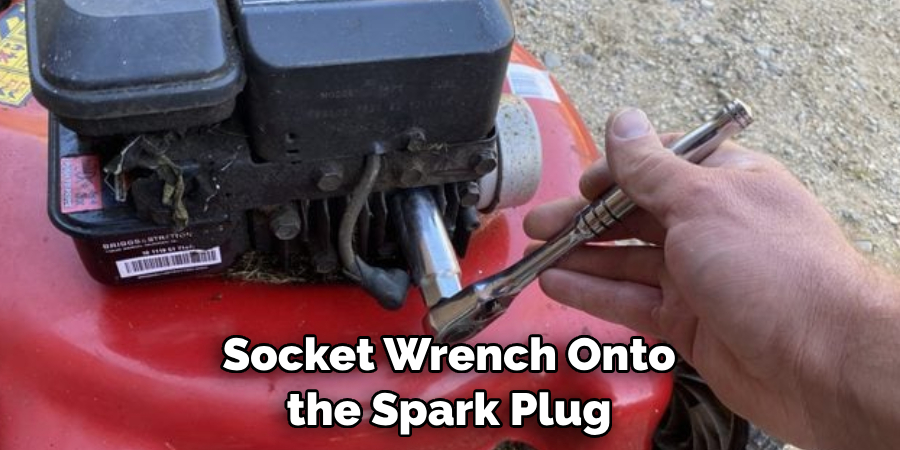
- Insert the spark plug wrench or socket wrench onto the spark plug, ensuring a secure fit.
- Carefully turn the wrench counterclockwise to loosen the spark plug. Be cautious not to apply excessive force, as it may damage the spark plug or the engine.
- Once loosened, continue unscrewing the spark plug by hand until it can be completely removed.
Step 5: Cleaning Or Replacing The Spark Plug If Necessary
After removing the spark plug, you’ll need to determine if it requires cleaning or replacement. Consider the following:
- If the spark plug appears dirty or worn out but is not damaged, it can be cleaned using a wire brush or spark plug cleaner.
- If the spark plug is heavily corroded, cracked, or the electrode tip is severely worn, it is best to replace it with a new one.
- Consult your lawn mower’s manual or a professional if you are unsure whether cleaning or replacement is needed.
Step 6: Reinstalling The Spark Plug Correctly
Once the spark plug has been cleaned or replaced, it’s time to reinstall it correctly. Follow these steps:
- Carefully insert the spark plug into the spark plug hole and thread it by hand to ensure proper alignment.
- Use the spark plug wrench or socket wrench to tighten the spark plug by turning it clockwise. Be careful not to over-tighten, as it can cause damage.
- Finally, reattach the rubber or plastic boot onto the spark plug until it fits securely.
By following this step-by-step guide, you can easily remove the spark plug from your lawn mower, inspect its condition, and clean or replace it if necessary. Remember, regular maintenance of your spark plug will help ensure optimal performance and extend the lifespan of your lawn mower.
Tips For Removing Stubborn Or Stuck Spark Plugs
Removing a spark plug from your lawn mower is a necessary task that you may encounter from time to time. While most spark plugs can be easily removed with a socket wrench, there may be instances where you encounter stubborn or stuck spark plugs that require some tricks and techniques to loosen them.
Additionally, there is always the possibility of the spark plug breaking off during the removal process. In this section, we will discuss the common issues you may encounter when removing spark plugs, provide some tried and tested tricks and techniques to loosen stubborn spark plugs, and outline what to do if the spark plug breaks off during removal.
Common Issues Encountered When Removing Spark Plugs:
- Rust or corrosion buildup around the spark plug threads can make it difficult to remove.
- Over-tightening the spark plug during installation can cause it to become stuck.
- The spark plug may have been in place for an extended period, resulting in a tight seal.
Tricks And Techniques To Loosen Stubborn Spark Plugs:
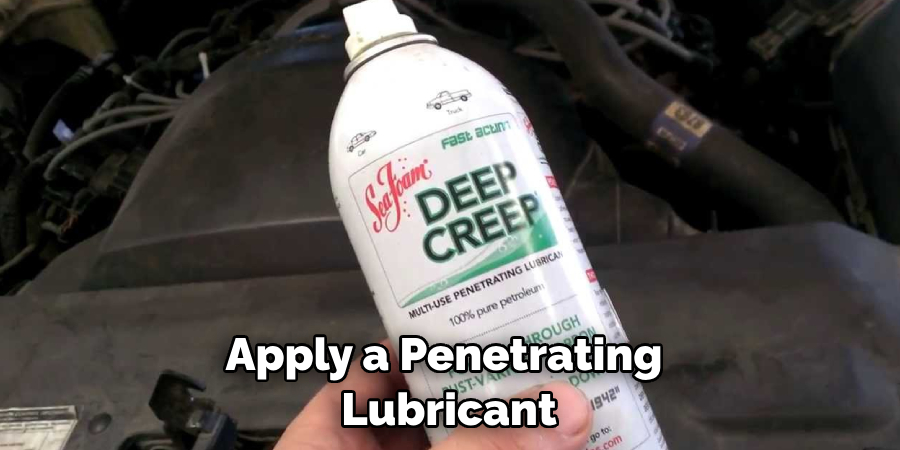
- Apply a penetrating lubricant, such as wd-40, to the spark plug threads and let it sit for a few minutes to break down any rust or corrosion.
- Use a spark plug socket with a rubber insert or a piece of rubber tubing to provide extra grip and prevent the socket from slipping.
- Gently tap the spark plug with a rubber mallet to help break it loose.
- If the spark plug is difficult to reach, using a spark plug socket with a built-in swivel joint can provide better access.
What To Do If The Spark Plug Breaks Off During Removal:
- Remain calm and assess the situation. It is important not to panic or rush the process.
- Use a spark plug removal tool or a pair of needle-nose pliers to carefully extract the remaining piece of the spark plug from the engine.
- If the spark plug tip breaks off inside the engine, consult a professional for assistance as attempting to remove it yourself could cause further damage.
- Once the broken spark plug has been removed, inspect the threads in the engine’s cylinder head for any damage. If necessary, clean or repair the threads before installing a new spark plug.
By following these tips and techniques, you can successfully remove stubborn or stuck spark plugs from your lawn mower without causing any further damage. Remember to exercise patience and caution during the removal process to ensure a smooth and hassle-free experience.
Frequently Asked Questions
Can I Remove The Spark Plug Without Any Prior Experience?
Removing a lawn mower spark plug may sound like a daunting task, especially if you don’t have any prior experience. However, fear not! With a little guidance and the right tools, removing a spark plug can be a breeze, even for beginners.
Here are a few key points to keep in mind:
- Familiarize Yourself with Your Lawn Mower’s User Manual: Before you start, it’s always a good idea to consult your lawn mower’s user manual. This will provide specific instructions and safety precautions for removing the spark plug.
- Gather the Necessary Tools: To remove the spark plug, you’ll need a spark plug socket wrench or a spark plug socket with a ratchet. These tools are readily available at most hardware stores.
- Ensure Safety Precautions: Before attempting to remove the spark plug, make sure the engine is turned off and has cooled down completely. Disconnect the spark plug wire to prevent accidental ignition.
- Follow the Right Technique: Insert the spark plug wrench or socket over the spark plug and turn it counterclockwise to loosen it. Once loose, you can use your hand to remove the spark plug completely.
How Often Should I Remove And Inspect My Lawn Mower Spark Plug?
Regular maintenance is crucial for keeping your lawn mower in top shape, and inspecting the spark plug is an essential part of that. Here are a few key points regarding the frequency of removal and inspection:
- Follow Your Lawn Mower Manufacturer’s Recommendations: The recommended interval for removing and inspecting the spark plug may vary depending on the manufacturer. Check your lawn mower’s user manual for specific guidance.
- Consider the Usage and Conditions: If you frequently use your lawn mower or operate it in dusty or humid environments, it may be beneficial to inspect the spark plug more frequently. This can help you catch any potential issues early on and ensure optimal performance.
- General Guideline: As a general rule of thumb, it’s recommended to inspect the spark plug at least once per mowing season. This allows you to assess its condition, clean or replace if necessary, and ensure proper ignition.
Are There Any Alternative Methods To Remove The Spark Plug?
While the traditional method of using a spark plug wrench or socket is the most common way to remove a spark plug, there are alternative methods available. Here are a few options you can consider:

- Needle-nose Pliers: If you don’t have a spark plug wrench or socket on hand, needle-nose pliers can serve as an alternative. Insert the pliers into the spark plug well and carefully turn counterclockwise to loosen and remove the plug.
- Spark Plug Removal Tool: Some lawn mower models come with a built-in spark plug removal tool. This tool typically attaches to the end of the spark plug and allows for easy removal without the need for additional tools.
- Seek Professional Assistance: If you are uncertain or uncomfortable with removing the spark plug yourself, it’s always best to seek professional assistance. Professional lawn mower technicians can safely remove and inspect the spark plug, as well as address any other maintenance needs.
Remember, regardless of the method you choose, always prioritize safety and consult your lawn mower’s user manual for guidance. Regularly removing and inspecting your lawn mower spark plug is an essential maintenance task that contributes to the overall performance and longevity of your machine.
Frequently Asked Questions Of How To Remove Lawn Mower Spark Plug
How Do I Remove A Spark Plug From A Lawn Mower?
To remove a spark plug from a lawn mower, start by disconnecting the spark plug wire. Use a spark plug socket and a ratchet to loosen and remove the spark plug. Be careful not to force it or damage the threads.
Conclusion
To wrap it up, removing a lawn mower spark plug may seem like a daunting task, but with the right tools and knowledge, it can be easily accomplished. Remember to disconnect the spark plug wire and use a spark plug socket to loosen and remove the plug.
Inspect the plug for any signs of wear or damage, and replace it if necessary. Regularly checking and changing the spark plug will ensure that your lawn mower operates smoothly and efficiently. By following the steps outlined in this blog post, you can successfully remove the spark plug and keep your lawn mower in top shape.
Happy mowing!

